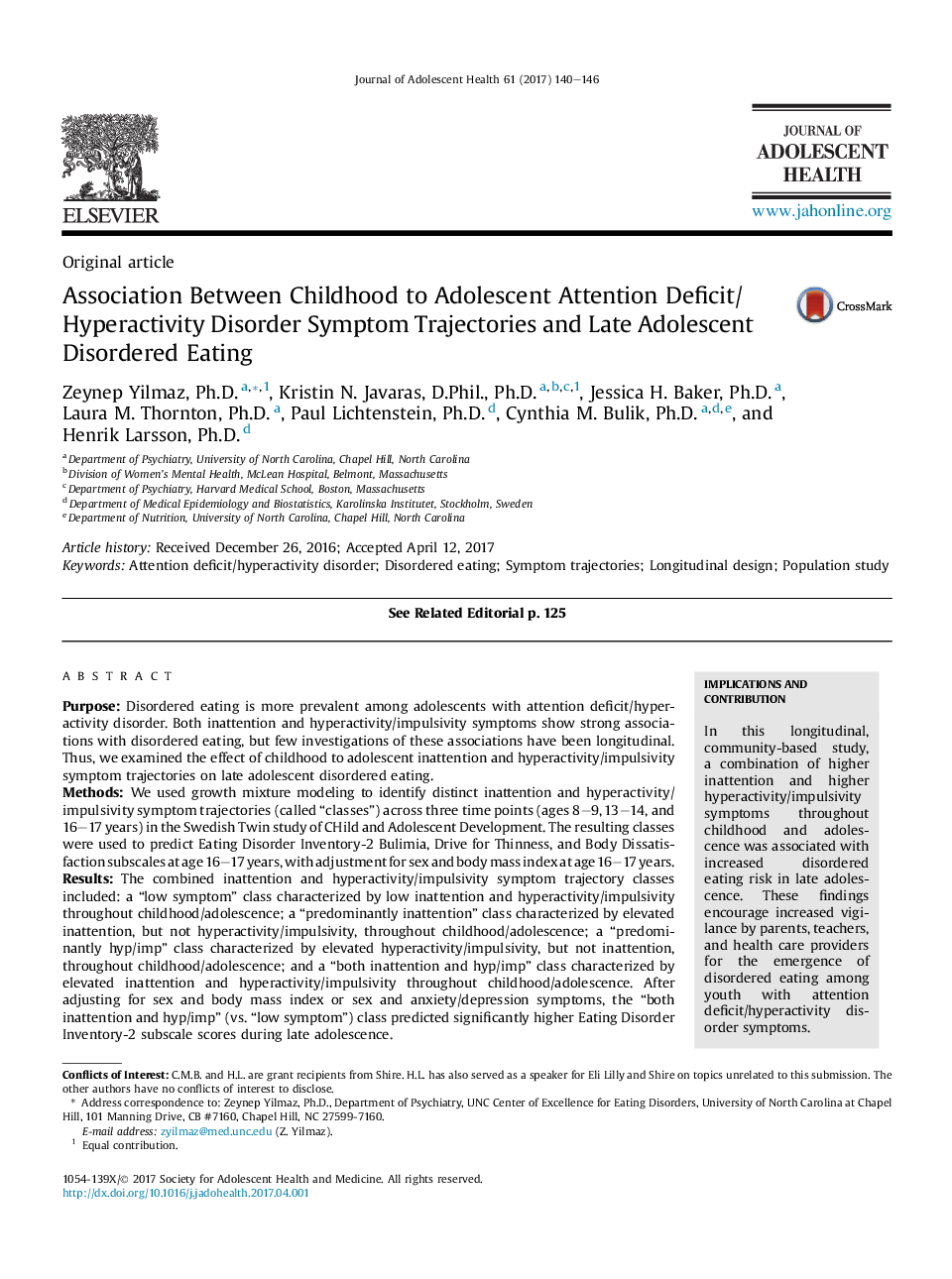| Article ID | Journal | Published Year | Pages | File Type |
|---|---|---|---|---|
| 5121213 | Journal of Adolescent Health | 2017 | 7 Pages |
PurposeDisordered eating is more prevalent among adolescents with attention deficit/hyperactivity disorder. Both inattention and hyperactivity/impulsivity symptoms show strong associations with disordered eating, but few investigations of these associations have been longitudinal. Thus, we examined the effect of childhood to adolescent inattention and hyperactivity/impulsivity symptom trajectories on late adolescent disordered eating.MethodsWe used growth mixture modeling to identify distinct inattention and hyperactivity/impulsivity symptom trajectories (called “classes”) across three time points (ages 8-9, 13-14, and 16-17 years) in the Swedish Twin study of CHild and Adolescent Development. The resulting classes were used to predict Eating Disorder Inventory-2 Bulimia, Drive for Thinness, and Body Dissatisfaction subscales at age 16-17 years, with adjustment for sex and body mass index at age 16-17 years.ResultsThe combined inattention and hyperactivity/impulsivity symptom trajectory classes included: a “low symptom” class characterized by low inattention and hyperactivity/impulsivity throughout childhood/adolescence; a “predominantly inattention” class characterized by elevated inattention, but not hyperactivity/impulsivity, throughout childhood/adolescence; a “predominantly hyp/imp” class characterized by elevated hyperactivity/impulsivity, but not inattention, throughout childhood/adolescence; and a “both inattention and hyp/imp” class characterized by elevated inattention and hyperactivity/impulsivity throughout childhood/adolescence. After adjusting for sex and body mass index or sex and anxiety/depression symptoms, the “both inattention and hyp/imp” (vs. “low symptom”) class predicted significantly higher Eating Disorder Inventory-2 subscale scores during late adolescence.ConclusionsIncreased vigilance for disordered eating among children who have both inattention and hyperactivity/impulsivity symptoms throughout childhood and adolescence could aid in early identification of eating disorders.
